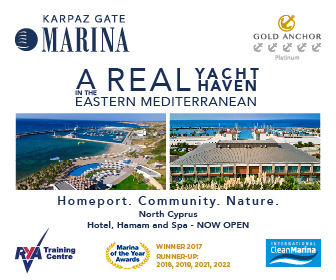British family rescued after yacht hits iceberg in South Atlantic
May 2010: A British family have been rescued by a warship in the South Atlantic after their yacht hit an iceberg and began to sink. They were sailing 300 miles northeast of South Georgia when their 60ft (18m) boat hit the low-lying iceberg.
Published 15 years ago, updated 6 years ago
Carl Lomas and Tracey Worth, from the village of Chelmorton in Derbyshire, UK, were on their 55ft oyster cutter sloop “Hollinsclough” with their daughters, Caitland and Morgause Lomas, believed to be in their teens.
The family alerted Falmouth Coastguard on Friday, which helped the Falkland Islands authorities to locate the vessel, which had taken on water and suffered engine failure. In turn, the British warship HMS Clyde, which was 200 miles south of the stricken vessel, was alerted, reaching the family five hours later (last night).
The family now face a 1,000-mile journey on the warship to the Falklands and are expected to arrive in the middle of this week. They were forced to abandon their boat to the ocean.
According to the family’s blog, their latest travels began in March 2007 in Ipswich and have taken in Santander, Cape St Vincent, Salvador, Buenos Aires, Robinson Crusoe Island, Cape Horn, and recently South Georgia, before disaster struck.
Outgoing Marine Engineer Officer Lieutenant Robert Satterley, from Alverstoke, Hampshire, said: “When we approached the yacht, we were relieved to see that there were four people alive and well.
“The yacht had sustained severe damage and lay low in the water and it was clear that the family had been through quite an ordeal.
“Unfortunately nothing could be done to save the yacht and we were just glad to get them back to the ship safely.”
The coastguard likened the submerged iceberg to the one that sank the Titanic. A spokesman explained: “What they’ve hit is a “growler”, where hardly anything is out of the water and the majority is submerged.
“It is very similar to what the Titanic hit. You can track them by radar or visual lookout, but you can’t see them all.”
The couple is understood to have left Britain more than five years ago, with their teenage daughters Caitland and Morgause joining them during school holidays.
Steven Gill, a fellow sailor who met the couple on their travels, described them as “extremely competent sailors” with an “extremely well-equipped” yacht.
“No expense had been spared in the upkeep,” he said.
The coastguard was alerted to the family’s predicament on Friday evening after their emergency radio beacon was activated.
In a brief entry in their online diary, timed at 12.58pm on Saturday, the family recorded: “300 Miles NE South Georgia, Ice convergence zone. 51.27.19 S 29.10.92W. EPIRB [Emergency Position Indicating Radio Beacon] alerted. Falmouth control aware, Royal Navy in support.”
Their position was pinpointed as 285 miles north-east of South Georgia and the Falmouth team contacted the Falkland Islands, where authorities co-ordinated the incident in liaison with teams at Falmouth and Kinloss.
Before their latest voyage, the family had spent some weeks on South Georgia. After a previous attempt to leave, they had to turn back when their autopilot failed.
As they made a second attempt to leave the island, nine days ago, they recorded in their diary: “We had repaired our autopilot the best we could, the boat was good … Twenty days or so ahead, maybe an anchorage at Tristan da Cunha, the main target is Cape Town. Fingers crossed for good winds and few icebergs.”
Report is taken from the online Sunday Times and Telegraph
Related to following destinations: Falkland Islands, South Georgia & South Sandwich Islands, United Kingdom






